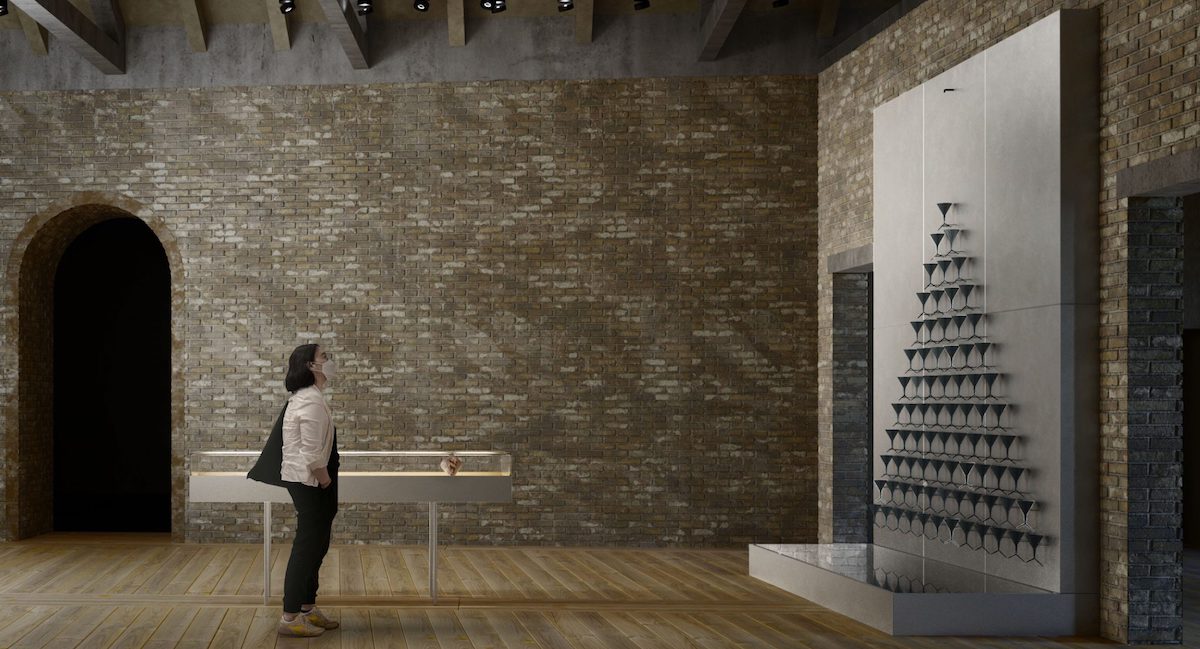The organisers of the Venice Biennale have confirmed that the Ukraine pavilion will go ahead as planned this April. It was thought that the Russian invasion would make it logistically impossible for the pavilion to proceed.
Last month, Pavlo Makov, the Artist chosen to represent Ukraine at the world-famous exhibition, said his team were forced to halt preparations for the Italian show. All flights from the capital Kyiv have been grounded until further notice. “We are not in immediate danger, but the situation is critical and changes every minute. Presently, we cannot continue working on the pavilion project due to the danger to our lives,” Makov and curators Lizaveta German, Maira Lanko, and Borys Filonenko tweeted this message.
Makov has been sheltering with family in the city of Kharkiv,and the three curators are in Kyiv. Both towns are under full attack from the Russian military.
Officials at the Biennale have been trying to find ways around this by “collaborating and will collaborate in every way” with the Ukrainian team to safely transport them and the artwork to Venice.
The Artist’s team were to present a version of Makov’s 1995 wall-mounted installation, ‘The Fountain of Exhaustion’, with water cascading from 78 bronze funnels. However, this may now change due to the location of the work and something new may be created to take its place.

Russian Art Collector Roman Abramovich Slapped With U.K. Sanctions
Roman Abramovich is one of seven Russians to be sanctioned by the UK Government. His assets have been frozen and he is banned from travelling to and from the UK. His private residence houses an extensive collection of Contemporary and Modern art, including work by Francis Bacon, Lucian Freud and Damien Hirst. Over the last few days, the government introduced a heavy crackdown on Russian oligarchs to pressure the Kremlin from inside following Russia’s invasion of Ukraine. Abramovich is also the co-founder of the Garage Museum of Contemporary Art in Moscow with his former wife, Dasha Zhukova. As a result of these far-reaching sanctions, Abramovich will no longer be able to sell Chelsea football club as planned.

Katharina Fritsch And Cecilia Vicuña Win Venice Biennale Golden Lions
The Venice Biennale has named two female Golden Lion winners honouring their Lifetime achievement in the visual arts. Katharina Fritsch and Cecilia Vicuña will be included in the biennial’s main show.
The Golden Lion Lifetime Achievement Award is presented to artists in their mid to late careers. Past winners have included El Anatsui, Jimmie Durham, Malick Sidibé, and Carolee Schneemann.
Katharina Fritsch creates iconic and singular sculpture that plays on the tension between reality and apparition, between the familiar and the surreal or uncanny. Her iconic objects, images, installations and sound works seem to imprint themselves on the mind as if they were gestalts or things we have seen and experienced before. Hearts, crosses, skulls, bottles and Madonnas are used to play on the fantasies and images that we share. Still, they are transformed through colour and material into things open and mysterious: latent notions transfigured into primal forms. You may recall her giant blue cockerel located on the fourth plinth in Trafalgar Square.
Vicuña, Cecilia Vicuña is a poet, Artist, filmmaker and activist. Her work addresses pressing concerns of the modern world, including ecological destruction, human rights, and cultural homogenisation. Born and raised in Santiago de Chile, she has been in exile since the early 1970s, after the military coup against elected president Salvador Allende. Vicuña began creating “precarious works” and quipus in the mid-1960s in Chile as a way of “hearing an ancient silence waiting to be heard.” Her multi-dimensional works begin as a poem, an image that morphs into a film, a song, a sculpture, or a collective performance. These temporary, site-specific installations in nature, streets, and museums combine ritual and assemblage. She calls this impermanent, participatory work “lo precario” (the precarious): transformative acts that bridge the gap between art and life, the ancestral and the avant-garde. For example, her paintings of the early 1970s de-colonised the art of the conquerors and the “saints” inherited from the Catholic Church to create irreverent images of the heroes of the revolution.

